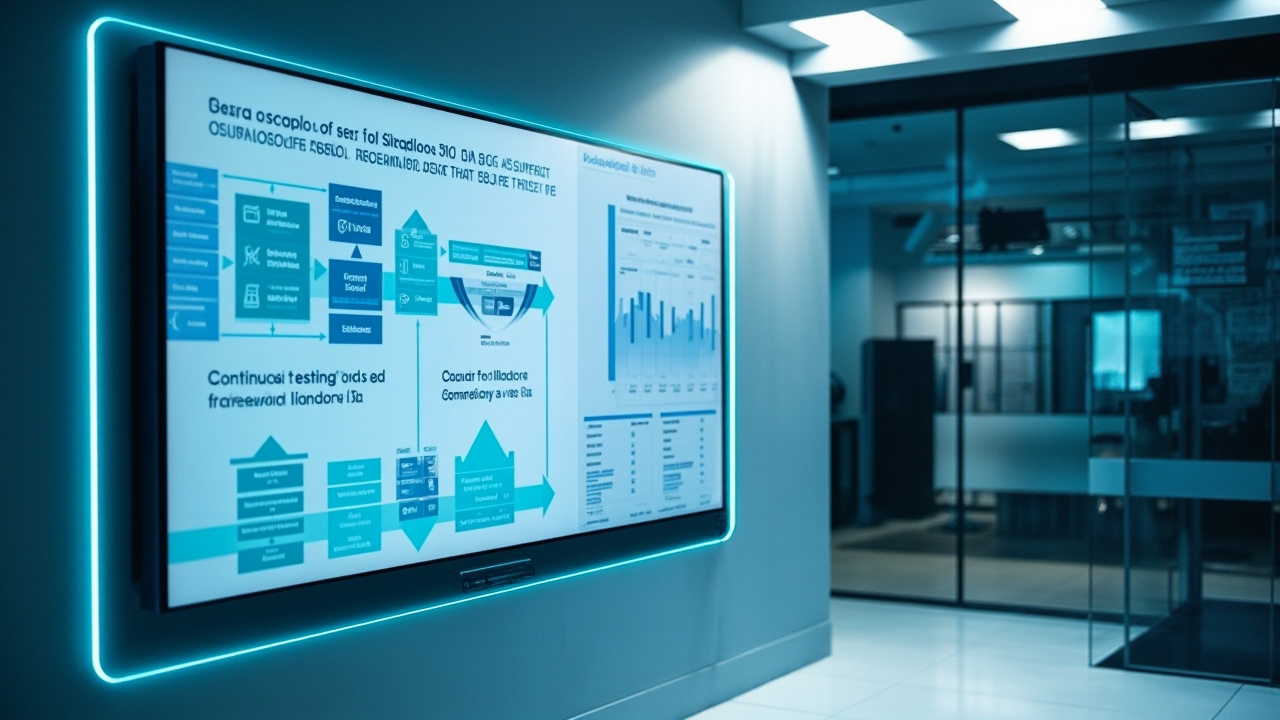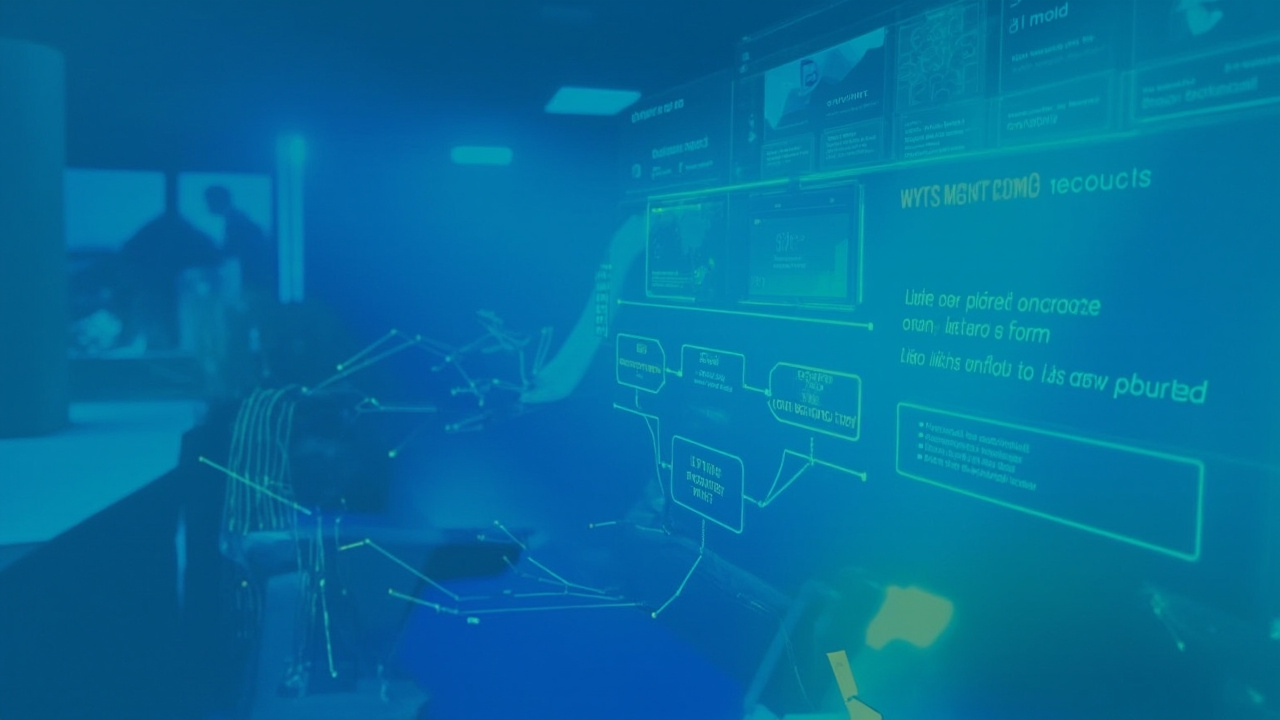In the ever-evolving realm of software development, testing stands as the unsung hero, often overshadowed by the allure of coding itself. Yet, as applications grow more complex and user expectations soar, the role of software testing becomes increasingly pivotal. Traditional methods, while foundational, are often stretched thin against the demands of today’s rapid development cycles. This is where innovative solutions, like AI-driven platforms, emerge as game-changers.
Software testing is no longer just about finding bugs; it’s about ensuring quality, enhancing user experience, and accelerating delivery timelines. The stakes are high: a small oversight can lead to significant repercussions, from financial losses to brand damage. In this landscape, understanding modern testing strategies, tools, and their applications is not just beneficial it’s essential.
In this comprehensive exploration, we’ll unravel the intricacies of software testing, delve into state-of-the-art methodologies, and introduce cutting-edge tools that are redefining the field. Whether you’re a seasoned developer, a quality assurance professional, or a tech enthusiast, this article will equip you with the knowledge to navigate and excel in the world of software testing.
The Evolution of Software Testing: From Manual to Automated

Software testing has undergone a remarkable transformation, evolving from manual processes to sophisticated automated systems. This section explores this evolution, highlighting the benefits and challenges each phase presents.
The Manual Era: Laying the Foundations
In the early days, software testing was a manual process, heavily reliant on human intervention. Testers meticulously executed pre-defined test cases, documenting results and reporting issues. This approach was straightforward but fraught with challenges. High costs, prolonged timelines, and human error were common drawbacks, making it difficult to keep pace with development cycles.
“Manual testing laid the groundwork, but its limitations spurred the innovation of automation.”
Despite its limitations, manual testing established critical methodologies such as black-box and white-box testing. These methods, focusing respectively on application functionality and internal structures, remain integral to modern testing strategies. For instance, black-box testing allows testers to validate software without knowledge of the internal code structure, ensuring that the application behaves as expected from an end-user perspective.
Moreover, manual testing was instrumental in the development of exploratory testing a technique where testers dynamically explore an application to discover defects. This method harnesses the tester’s creativity and intuition, allowing them to uncover issues that scripted tests might miss. However, as software systems grew in complexity, the limitations of manual testing became more pronounced, paving the way for the rise of automation.
The Rise of Automation: Efficiency Meets Accuracy
Automation revolutionized software testing by introducing tools that could execute repetitive test cases with speed and precision. Automated testing frameworks, like Selenium and JUnit, emerged, allowing testers to focus on more complex scenarios. This shift not only reduced human error but also significantly accelerated testing processes.
However, automation is not without its challenges. Developing and maintaining automated test scripts requires considerable upfront effort and expertise. Test scripts can break with changes in application design, leading to maintenance overheads. To mitigate these challenges, teams must invest in robust test script design and establish comprehensive maintenance strategies.
An example of successful automation implementation can be seen in the financial services industry, where firms have automated regression testing to ensure compliance with regulatory changes. By automating these tests, companies have reduced the time and resources required to validate compliance, allowing them to respond more swiftly to regulatory updates.
The Advent of AI: A New Era of Intelligent Testing
The integration of artificial intelligence into software testing is the latest leap forward. AI-driven tools, such as GenQE, are designed to address the limitations of traditional automation. By leveraging machine learning, these platforms can generate and execute test cases, analyze results, and even self-heal broken scripts.
AI-driven testing promises to enhance test coverage and accuracy while reducing manual effort. Intelligent tools not only identify defects but also predict potential issues, allowing developers to proactively address problems before they impact users. This predictive capability is particularly valuable in industries like healthcare, where software reliability is critical to patient safety.
For instance, an AI-driven testing platform might analyze historical test data and user behavior to identify patterns indicative of potential defects, enabling teams to address these issues early in the development cycle. This proactive approach not only improves software quality but also enhances user satisfaction by reducing the likelihood of defects affecting the end-user experience.
Navigating the Complexities of Modern Software Testing

As applications become more intricate, testing must adapt to meet new challenges. This section examines the complexities of modern software testing and how innovative strategies and tools address these challenges.
Increasing Application Complexity: The Challenge
Today’s software applications are more complex than ever, with features spanning multiple platforms and technologies. This complexity introduces a myriad of testing challenges, from ensuring cross-platform compatibility to managing dependencies. Modern applications often rely on microservices architectures, which, while offering scalability and flexibility, also add layers of complexity to testing.
Testing complex systems requires comprehensive strategies that go beyond basic functionality checks. Security, performance, and usability testing are now critical components of a comprehensive testing strategy. Security testing, for example, involves identifying vulnerabilities that could be exploited by attackers, while performance testing ensures that applications can handle expected load without degradation in user experience.
Moreover, usability testing has gained prominence as user experience becomes a key differentiator in competitive markets. Ensuring that applications are intuitive and user-friendly is crucial to achieving high user satisfaction and adoption rates.
Continuous Testing in Agile and DevOps
Agile and DevOps methodologies emphasize continuous integration and delivery, demanding seamless and ongoing testing processes. Continuous testing integrates testing into the development lifecycle, ensuring that code changes are validated immediately. This approach not only accelerates delivery timelines but also enhances software quality by enabling teams to identify and resolve issues early.
Tools like GenQE integrate seamlessly with CI/CD pipelines, facilitating continuous testing. By automating test execution and analysis, these platforms help teams maintain rapid release cycles without compromising quality. For example, a fintech company might leverage GenQE to automate the testing of critical payment processing features, ensuring that any code changes do not introduce defects that could disrupt financial transactions.
“Continuous testing is the backbone of Agile and DevOps, ensuring quality at every step of the development process.”
Furthermore, continuous testing supports the concept of “shifting left,” where testing is moved earlier in the development cycle. This allows teams to identify and address issues before they escalate, reducing the cost and effort of fixing defects in later stages of development.
The Role of AI: Enhancing Test Coverage and Efficiency
AI-driven platforms offer advanced capabilities that enhance test coverage and efficiency. GenQE, for instance, uses AI-driven test generation to create comprehensive test suites based on software requirements and user behavior. This not only improves coverage but also reduces the reliance on manual test design.
AI also enables smart test execution, prioritizing test cases based on risk and impact. This ensures that critical areas are tested first, optimizing testing efforts and identifying high-impact defects early. In industries like telecommunications, where downtime can have significant financial implications, smart test execution ensures that critical network components are thoroughly tested, minimizing the risk of service disruptions.
AI-driven analytics further enhance testing by providing insights into software quality trends. By analyzing test results, these platforms can identify recurring issues and provide recommendations for improvement, enabling teams to make informed decisions and prioritize testing efforts effectively.
The Power of Automation: Transforming Testing Practices

Automation is at the heart of modern software testing. This section delves into the transformative power of automation, exploring its capabilities, benefits, and limitations.
Automation Tools: Driving Efficiency and Consistency
Automation tools have become indispensable in software testing, offering significant efficiency and consistency gains. By automating repetitive tasks, these tools allow testers to focus on more complex scenarios that require human intuition and creativity. In sectors like e-commerce, where applications must handle high transaction volumes and diverse user interactions, automation ensures that functional and performance tests are consistently executed with minimal human intervention.
“Automation transforms testing from a resource-intensive task into a streamlined process, enhancing both speed and accuracy.”
However, automation is not a panacea. Test scripts require careful design and maintenance, and not all testing scenarios are suitable for automation. Understanding the strengths and limitations of automation tools is essential for effective implementation. For instance, while automation excels at executing predefined scenarios, it may struggle with dynamic or exploratory testing tasks that require human judgment.
To maximize the benefits of automation, teams must adopt a strategic approach that aligns with their specific testing requirements and constraints. This may involve selecting the right tools and frameworks, defining clear automation objectives, and continuously evaluating and refining automation efforts to adapt to changing project needs.
Self-Healing Scripts: Minimizing Maintenance Efforts
One of the major challenges of automation is maintaining test scripts in dynamic environments. Changes in application design can break scripts, leading to increased maintenance efforts. AI-driven platforms like GenQE address this challenge with self-healing capabilities, automatically adjusting scripts to accommodate UI changes.
This innovation reduces downtime and maintenance efforts, allowing teams to focus on enhancing test coverage and addressing complex testing scenarios. For instance, a retail company might use GenQE’s self-healing features to maintain automated tests for its online storefront, ensuring that tests remain functional even as UI elements are updated to improve user experience.
Self-healing scripts not only reduce the burden of test maintenance but also enhance agility by enabling teams to respond swiftly to changes in application design. This capability is particularly valuable in fast-paced industries where frequent updates and iterations are the norm.
Case Study: Automation in Action
Consider a large e-commerce platform facing challenges in maintaining test scripts due to frequent UI updates. By implementing GenQE, the platform was able to automate test generation and leverage self-healing scripts, reducing maintenance efforts by over 50%. This not only improved testing efficiency but also accelerated release cycles, enhancing the platform’s competitive edge.
The implementation of GenQE allowed the e-commerce company to focus resources on developing new features and improving customer experience, rather than expending effort on test maintenance. As a result, the company achieved faster time-to-market and improved customer satisfaction, reinforcing its position as a leader in the online retail space.
Ensuring Comprehensive Test Coverage: Strategies and Tools

Comprehensive test coverage is crucial for delivering quality software. This section explores strategies and tools for achieving thorough test coverage across diverse platforms and technologies.
Multi-Platform Testing: A Necessity
In today’s multi-device world, ensuring that applications function seamlessly across different platforms is essential. Multi-platform testing involves validating application behavior on various devices, operating systems, and browsers. This approach ensures that applications deliver a consistent user experience, regardless of how or where they are accessed.
“In a world where users engage through multiple devices, multi-platform testing ensures consistent and reliable experiences.”
Achieving comprehensive multi-platform coverage requires a combination of automated and manual testing techniques. Automated tools can efficiently execute tests across a wide range of platform configurations, while manual testing provides the flexibility to explore edge cases and assess user experience.
Tools like GenQE offer comprehensive test coverage across platforms, including web, mobile, APIs, and cloud environments. By automating test execution across these platforms, teams can identify and address discrepancies early. For example, a travel booking application might leverage GenQE to validate its functionality across different mobile devices, ensuring that users can seamlessly book flights and hotels from any device.
Leveraging AI for Enhanced Coverage
AI-driven platforms enhance test coverage by generating test cases that mimic real-world user behavior. This approach ensures that edge cases and potential defects are identified, improving overall software quality. AI can analyze user interaction data to identify patterns and generate test scenarios that reflect actual usage, increasing the likelihood of uncovering hidden defects.
GenQE’s AI-powered defect detection identifies patterns in test results, enabling early detection of anomalies. This proactive approach prevents critical issues from reaching production, safeguarding user experience. In industries like finance, where software reliability is paramount, AI-driven defect detection ensures that applications meet stringent quality standards.
Furthermore, AI-driven analytics provide insights into test coverage and effectiveness, helping teams identify gaps and prioritize testing efforts. By leveraging these insights, organizations can optimize their testing strategies to achieve comprehensive coverage with minimal resources.
Practical Application: Achieving Coverage in a Complex Environment
Consider an enterprise application with a diverse user base accessing the system through web and mobile interfaces. By leveraging GenQE, the development team automated test execution across platforms, ensuring consistent functionality and user experience. This comprehensive approach reduced user-reported issues by 30%, enhancing the application’s reliability.
The enterprise’s proactive testing strategy enabled it to maintain high standards of quality and user satisfaction, even as it expanded its offerings and user base. By ensuring comprehensive coverage, the organization was able to effectively navigate the complexities of a multi-platform environment, positioning itself for continued success.
The Future of Software Testing: Trends and Innovations

The software testing landscape is continuously evolving, driven by technological advancements and changing user expectations. This section explores emerging trends and innovations shaping the future of software testing.
Shift-Left Testing: Detecting Issues Early
Shift-left testing emphasizes early testing in the development lifecycle, aiming to detect and resolve issues before they escalate. This approach reduces costs and accelerates delivery timelines by addressing defects early. By integrating testing into the development process, organizations can identify and address issues before they reach production, minimizing the risk of costly post-release defects.
AI-driven platforms like GenQE facilitate shift-left testing by integrating seamlessly with development pipelines. By automating test generation and execution, these tools enable continuous validation of code changes, ensuring quality at every stage. For instance, a software company might implement GenQE to automate unit and integration testing, allowing developers to receive immediate feedback on code changes and make informed decisions.
“Shift-left testing is not just a trend; it’s a paradigm shift that redefines quality assurance.”
Shift-left testing also encourages collaboration between development and testing teams, fostering a culture of shared responsibility for quality. By prioritizing testing early in the development cycle, organizations can improve communication, streamline workflows, and enhance overall productivity.
IoT and AI: Expanding Testing Horizons
The rise of IoT devices and AI technologies presents new testing opportunities and challenges. Testing IoT applications requires validating connectivity, interoperability, and security across diverse devices and networks. As IoT ecosystems expand, ensuring seamless communication and interaction between devices becomes increasingly complex.
AI-driven tools enhance IoT testing by automating test generation and execution, ensuring comprehensive coverage. GenQE’s advanced analytics and reporting provide insights into software quality trends, guiding teams in making informed decisions. For example, an IoT solution provider might use GenQE to validate device interoperability and ensure that its products meet industry standards for performance and security.
The integration of AI in IoT testing also enables predictive analytics, allowing teams to anticipate and address potential issues before they impact end-users. This capability is crucial in industries like automotive, where IoT devices play a critical role in vehicle safety and performance.
Conclusion: Embracing the Future
The future of software testing is bright, with AI and automation poised to redefine quality assurance. As applications grow in complexity, embracing these innovations is crucial for delivering reliable, user-centric software. By staying abreast of emerging trends and adopting cutting-edge tools, organizations can position themselves at the forefront of the software testing revolution.
As we look to the future, it is clear that AI and IoT will continue to drive innovation in software testing. By harnessing the power of these technologies, organizations can enhance their testing practices, improve software quality, and deliver exceptional user experiences.
Final Thoughts: Elevating Software Testing to New Heights

Software testing is an ever-evolving field, continually adapting to meet the demands of modern development. From manual processes to AI-driven platforms, the journey of testing is one of innovation and transformation. By embracing cutting-edge tools and strategies, organizations can elevate their testing practices, ensuring quality, efficiency, and user satisfaction.
For those looking to enhance their testing processes, exploring AI-driven platforms like GenQE offers a pathway to improved quality and accelerated delivery. As we move forward, let us embrace these innovations, ready to tackle the challenges of tomorrow’s software landscape.
In conclusion, the future of software testing is here, brimming with possibilities and innovations. As you explore these tools and strategies, consider how AI-driven platforms like GenQE can transform your testing practices, driving efficiency and quality to new heights. Whether you’re a developer, tester, or IT leader, the time to embrace the future of software testing is now.
Discover More Innovative Solutions
Want to learn more about the tools and technologies discussed in this article? Explore how these innovations can be tailored to your specific needs and workflow requirements.
Our team of experts is available to answer your questions and provide personalized insights into how modern solutions like GenQE can address your specific challenges.
If the link above does not work, please visit: https://calendly.com/dm-csimplifyit/30min?month=2025-05